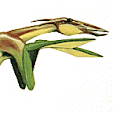The reason I drastically reduced the frequency of blogging was so I would have more time to work on The Book. Well, that approach turned out well. The year is not over yet, and I have produced 11 spreads already. A 'spread' is a double page. I present species and other themes using a double page for each, so it makes sense not to think in pages but in spreads. I expect to finish three more spreads this year, bringing the total of new pages for this year up to 28. That may not seem like much for a book that will count some 160 pages, but it also means that more than one third is completely done, and the rest is about half way there. A big advantage of the increased production rate is that painting becomes much easier if you do it regularly.
Of course, once you stop blogging you should expect to find that not many people will read this post, but we'll see. The point of his post is to let the world know that the Furaha project is far from dead, and to prove it I will show you a few glimpses. Do not expect full paintings though: I will keep those for The Book.
 |
| Click to enlarge; copyright Gert van Dijk |
I decided that my map making skills needed improvement, so I experimented with various graphic styles and came up with a style that combines shadowing effects with colours indicating height. Of course, a map needs names for places, etc., so there are now a few hundred of those. Here is a fragment of the all-new Furaha world map.
Along with the new map I thought about which animals to put where on the planet. I never actually spent any time on that, but now wondered whether it might be prudent to ship off some of the really odd designs to places where they might have developed in isolation. This of course prompted the question which places have been isolated for a long time. So here is something that will not be found in the book, as it is an animation made just for this post. It shows continental drift on Furaha for the period of 200 to 100 million years ago (MYA). In case the changing shapes of the continents confuse you, the change is simply a consequence of the map projection: on a sphere you would be able to see that the continental masses -the yellow shapes- do not change in shape. The blue lines are present-day coastlines, only put there to help make sense of which continent is which. Ancient coast lines are not indicated. They can be quite different. The projection is the so-called 'Eckert IV' one, by the way. All done with Matlab and good old-fashioned trigonometry and matrix algebra.
 |
| Ten Borgh with a student. Click to enlarge. Copyright Gert van Dijk |
So there you are: the project is alive and well! Will there be more posts? Occasionally, yes.
